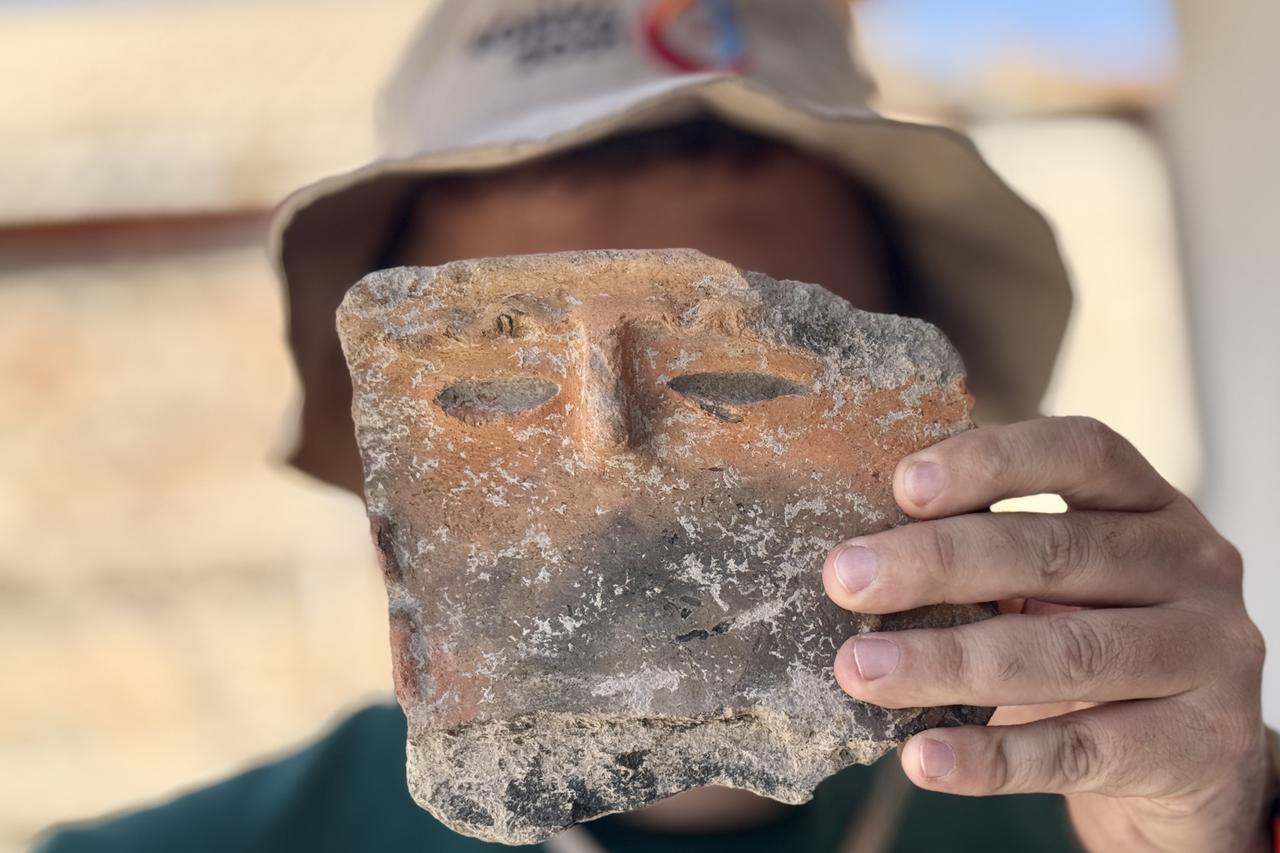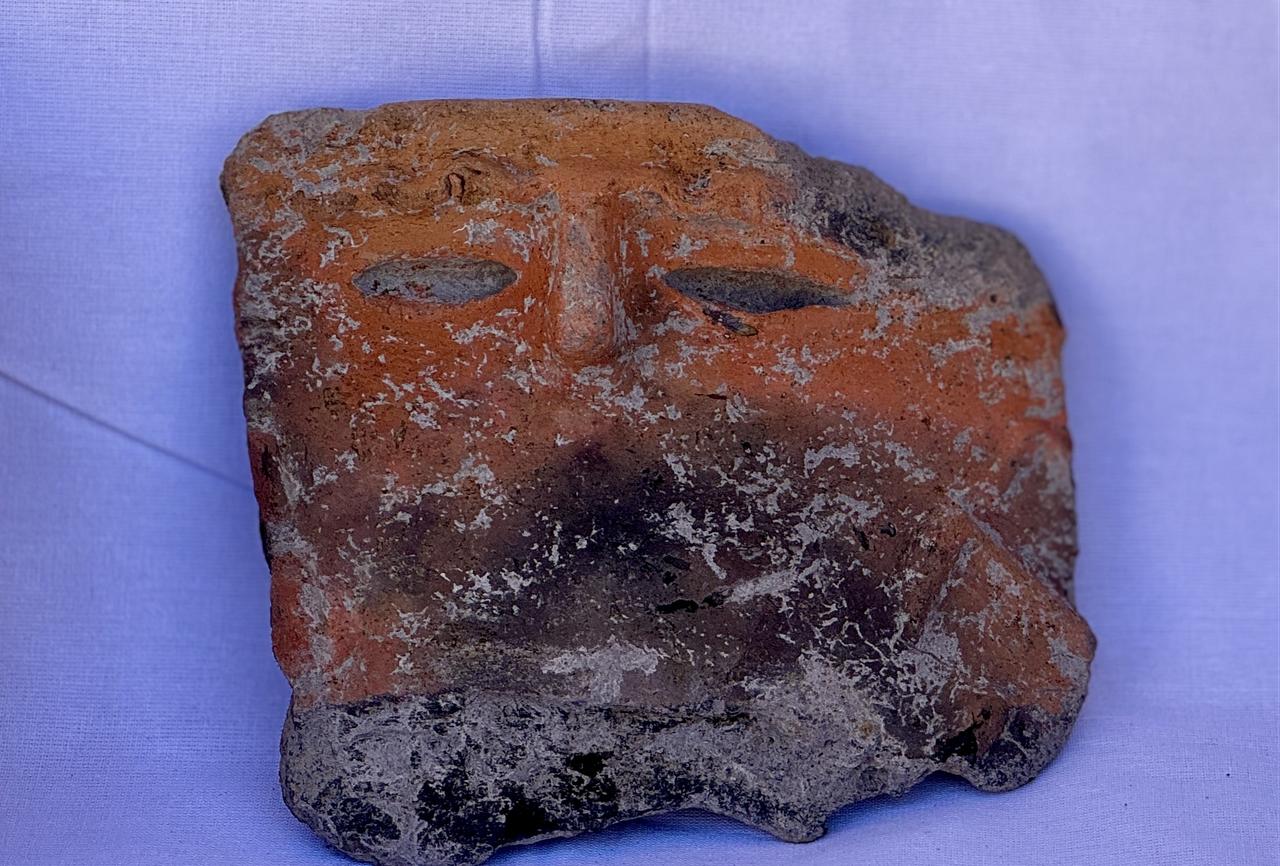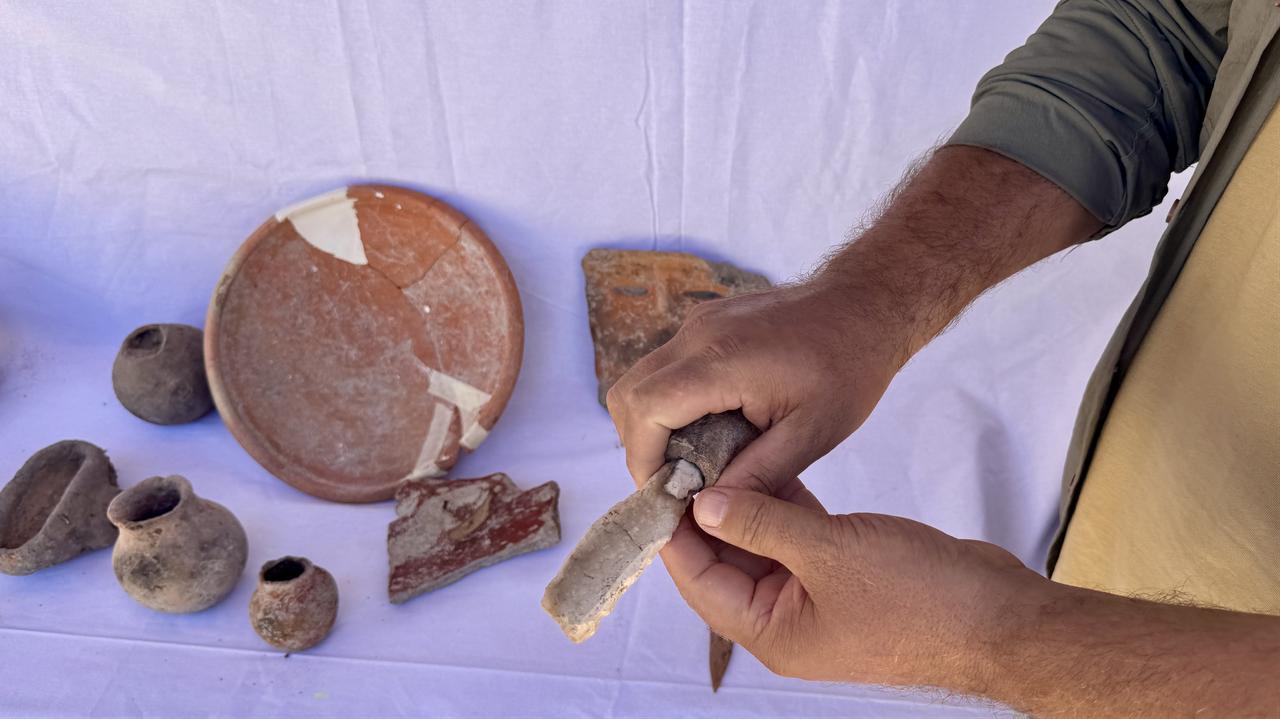
Archaeologists in Türkiye have unearthed a striking pottery fragment carved with a human face at Gokhoyuk, an archaeological mound in the Seydisehir district of Konya province. The piece, estimated to be around 5,000 years old, is thought to have served a ritual purpose rather than everyday use.
Located just 8 kilometers (4.97 miles) from Seydisehir, Gokhoyuk spans 5 hectares and was first identified in the 1950s during surveys by British archaeologist James Mellaart. Interest in the site grew in 2002 when irrigation work revealed ancient artifacts, leading to rescue excavations by the Konya Museum Directorate until 2005.
After years of pause, excavations restarted in 2023 under the direction of Associate Professor Ramazan Gunduz of Selcuk University, with support from Türkiye’s Ministry of Culture and Tourism. The project also benefits from Seydisehir Municipality, Konya Metropolitan Municipality, and the Ministry’s broader “Heritage for the Future” initiative, which funds archaeological research across the country.

Among recent finds, the most extraordinary is a pottery fragment depicting human facial features. Gunduz explained that the piece shows finely modeled eyebrows, a prominent nose, and almond-shaped eyes, all carefully carved while the vessel was still being made.
The fragment likely belonged to a larger pot used during ceremonies, not in daily cooking. Human-face pottery was particularly common in Western Anatolia during the Early Bronze Age, but this level of preservation is considered extremely rare in Central Anatolia.
“Gokhoyuk people gave deep symbolic meaning to their ceramics,” Gunduz noted. “They did not only use them for daily needs like cooking but also as ritual objects in ceremonies.”
Archaeological layers at Gokhoyuk reveal continuous settlement from 7,000 B.C. to 1,000 B.C., spanning the Neolithic, Chalcolithic, Bronze, and Iron Ages. Earlier excavations had linked the site to the Iron Age, but more recent work uncovered significantly older material.
The newly discovered fragment will undergo radiocarbon testing at Selcuk University to establish a precise date. Initial assessments suggest it dates back roughly five millennia.

Excavations also yielded animal figurines, seals, obsidian arrowheads, and small stone axes. Obsidian, a volcanic glass prized in antiquity, was used to craft sharp arrow and spear tips for hunting. Stone axes, employed since the Neolithic period, were multipurpose tools of daily life.
These discoveries underscore Gokhoyuk’s importance as the only site in the Konya Plain where an uninterrupted 7,000-year history of human settlement can be traced. Gunduz emphasized that ongoing work will help establish the mound as a major center for prehistoric research in Anatolia.